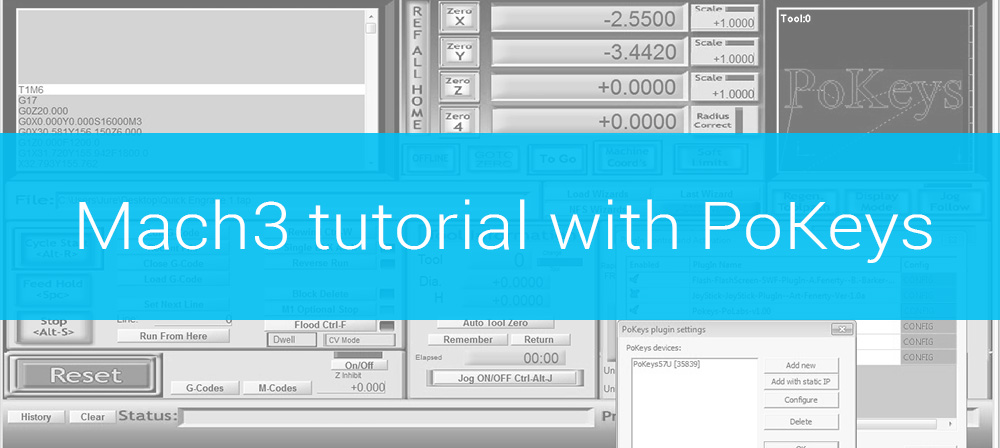
Mach3 Serial Port Plugin Download
Firmware download. Product comparison. Online guides. Mach3 plugin. Mach3 plugin. Plugin mach3usb.dll for Mach3 (Ethernet and USB). A second port number (default 2) may be entered for dual port USB card. Restart Mach3 if any change. Auto-off on enable signals. Nov 23, 2017 - The parallel port is now obsolete so how can we still use Mach3 which required one to work a CNC. Just plug in the DB-25 cable and that's it.
Link / News Box Your Link Your Link Your Link Your Link Your Link Text Box Use this box to type any specials, new updates or even gallery pics here. Serial communication with Mach3 Out of the box Mach3 provides some limited ways of communicating with external devices over the serial port (not counting MODBUS). Under Config -> General Config you can select the baudrate and either 8-N-1 or 7-N-2.
You can then use the macro-call SendSerial ('This is a test') to send a string of data. As you can see this is quite straight forward but it's also quite limiting since you don't have full control over the port - you can't for example set the parity and you can't, to my knowlege, receive data from a device. Fortunately the Cypress Enable scripting engine built into Mach3 allows you to access commands and functions in external.dll files and the intention with this page is to show an example of how that can be done to achive a more flexible way of doing serial communication. The brute force method of doing this would be to access the directly in order to gain access to the serial ports but this is neither easy or straight forward and it is beyond my knowlege level when it comes programming. A rescent question on the Mach3 Yahoo user group sent me on a hunt for a.dll library that would provide an easier interface to the serial port than the Windows API method.
Basically the.dll provides an interface between our application (the Mach3 macro/script) and the Windows API so that we don't have to worry about the low level stuff. I stumbled across an old (2003) article i the electronics magazine ELEKTOR where they provided a.dll for serial communications. The.dll is available for download from their web-site but I'm not sure if I'm allowed to redistribute it so I'm going to provide you with a to their Swedish site instead. You can also get it from english web-site but you need to create an account in order to access the file there (which I believe is free).
If you download the.zip file from the Swedish site the archive contains a bunch of files, the one we're specifically interested in here is the one called Serial.dll. If you download from the English site you'll get the.dll directly ( 020388-11.zip). In order for Cypress Enable to find the file you need to place it in one of the following locations (I recommend the first): 1) Your Mach3 install folder (usually C: Mach3) 2) Your macro folder 3) In the Windows folder Before we can use the functions exported by the.dll we must tell Cypress Enable that we are intending to use functions located in an external library, what they are called and what type of data they expect and return. Since the example file provided in the.zip file is written in Delphi this took a bit of reverse engineering and trial error for me to get working in Cypress but I think I've got it now. You can download a copy of this file. I won't go into all of the available functions here but I'll try the cover the ones most likely to be used and I'll do it in the order you're likely to be calling them. COMPortExists(n) This function is used to check if a port with a certain number is available or not.
This is done by passing in the number of the comport that we're interested in and the funtion will return 1 if the port exists and is free to use. South africa drivers license font. It will return 0 if the port either doesn't exists or is already opened by another application (or can't be used for whatever reason). Example: e = COMPortExists(1) OpenCOM(n) This function opens the port with the number you pass to it and it returns that very same number if the port is opened successfully. It returns 0 if the port couldn't be opened. Example: e = OpenCOM(1) BaudRateSet(n) This function sets the baudrate for the currently opened port. It returns TRUE if the operation is successful and FALSE if not. Any number may be passed in but not all ports will allow non standard baudrate.